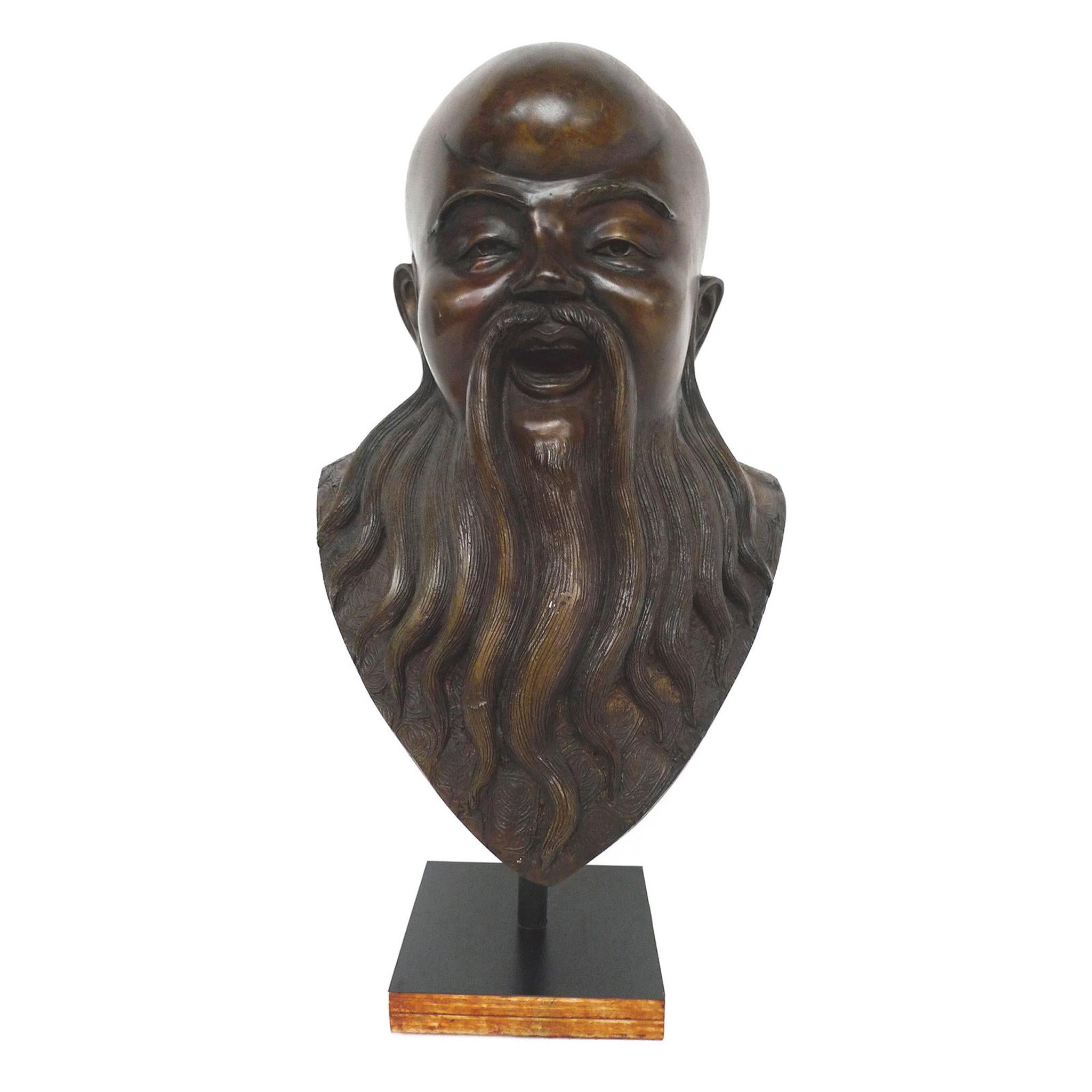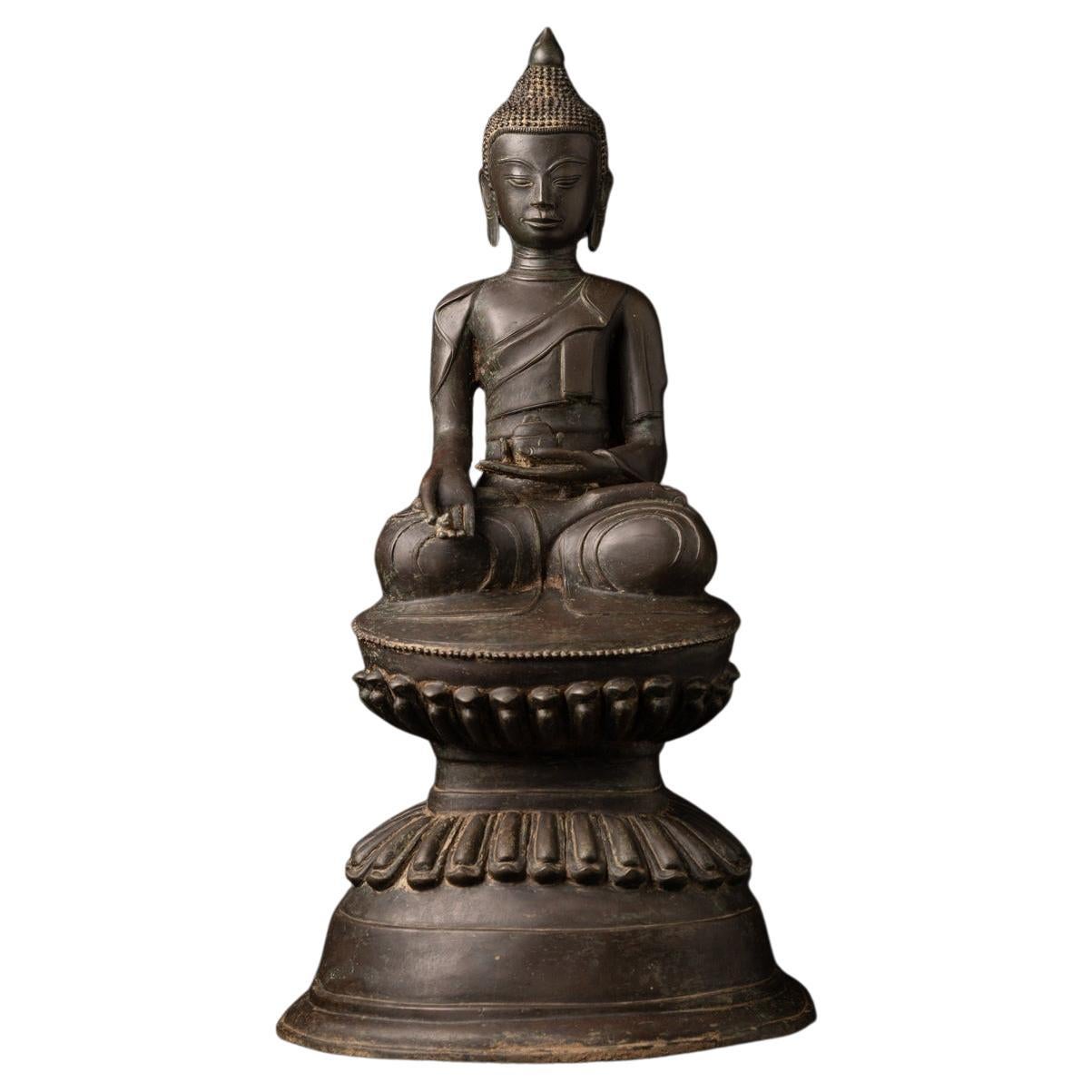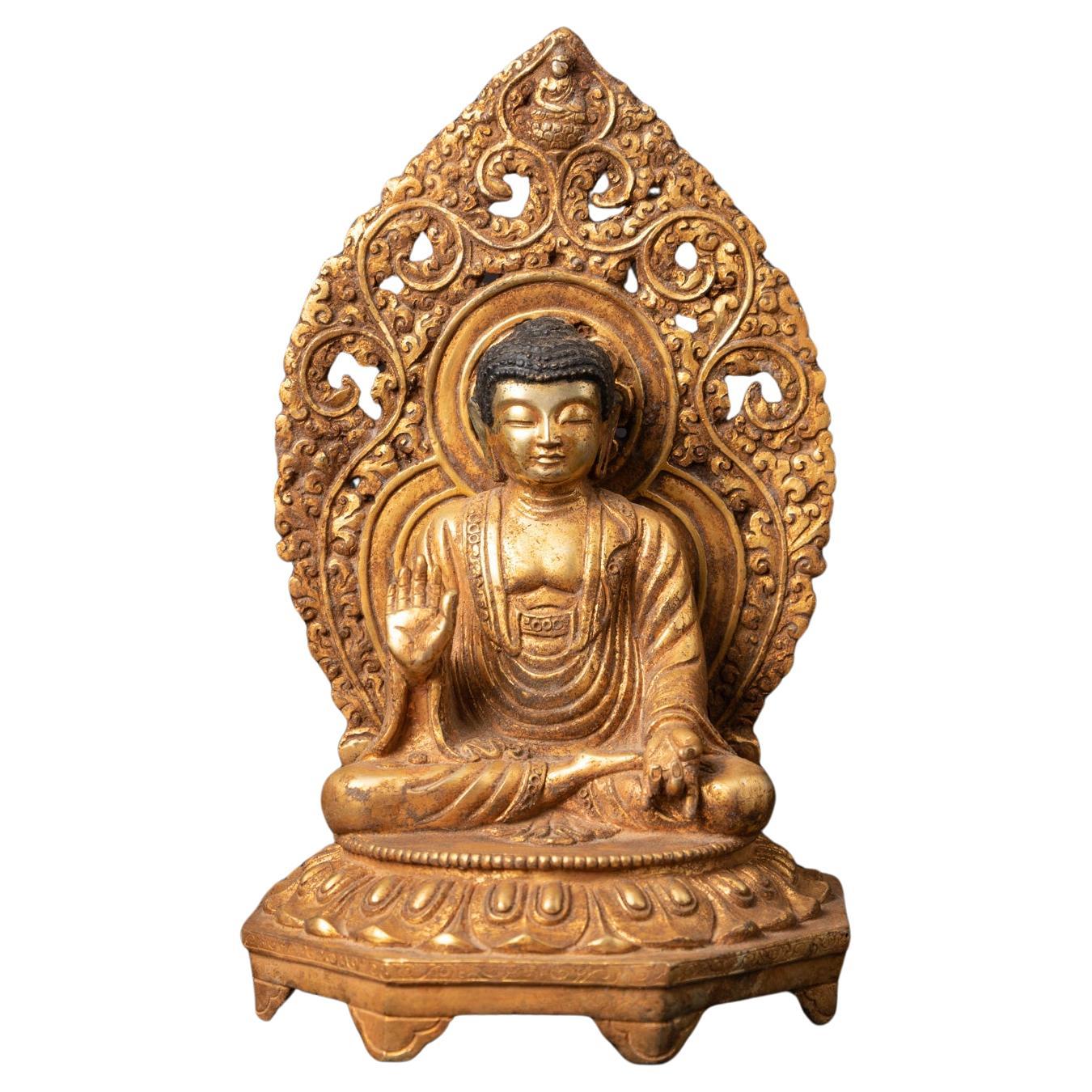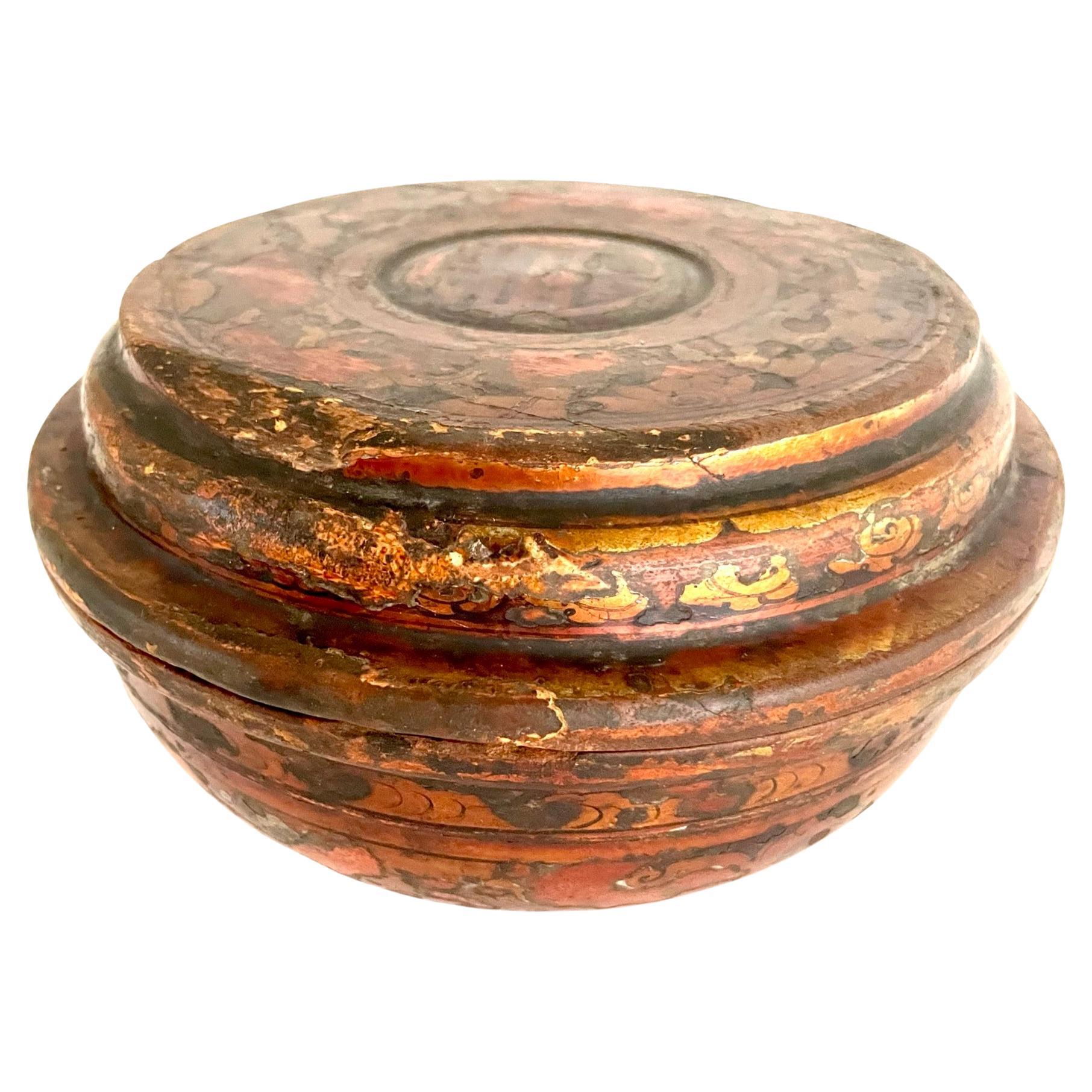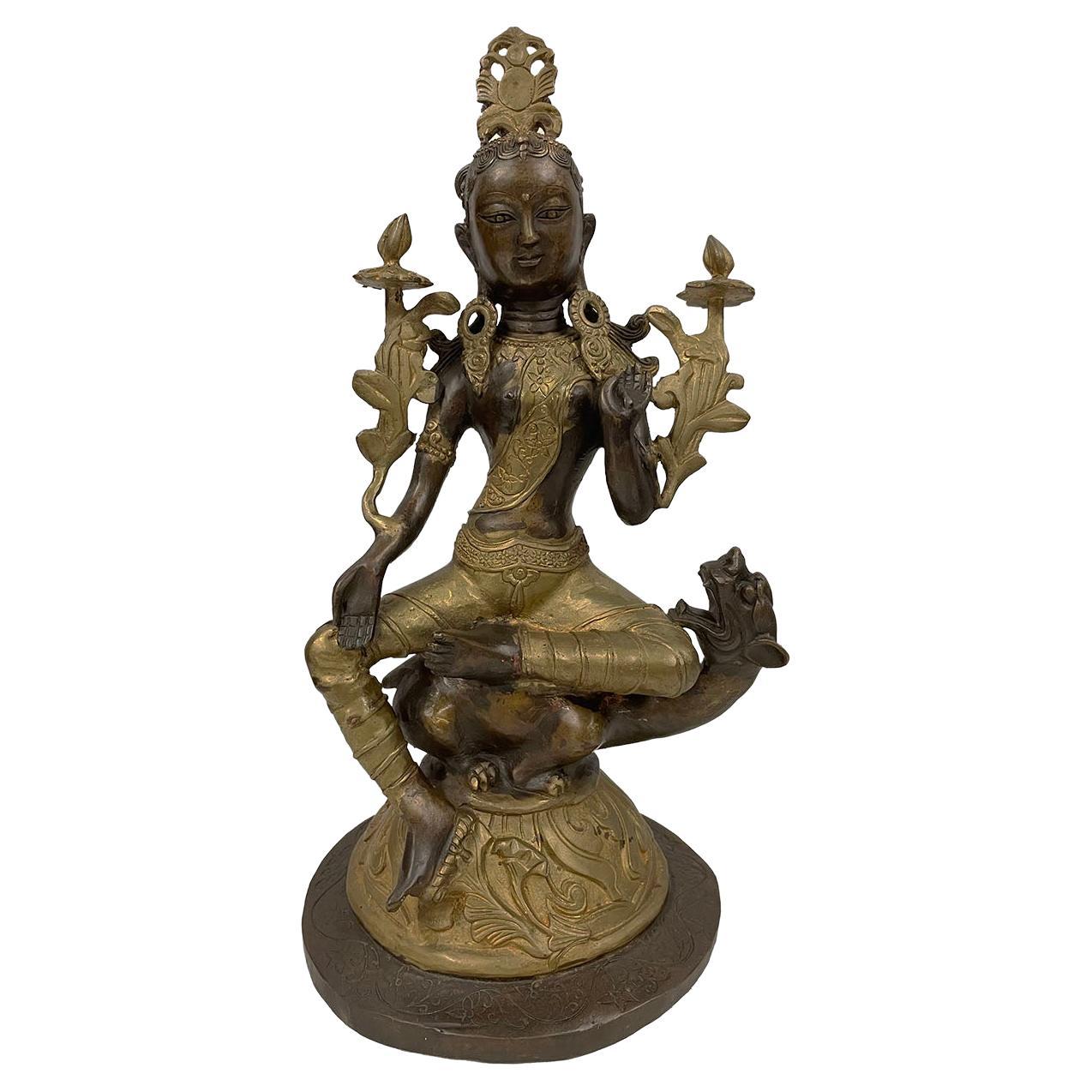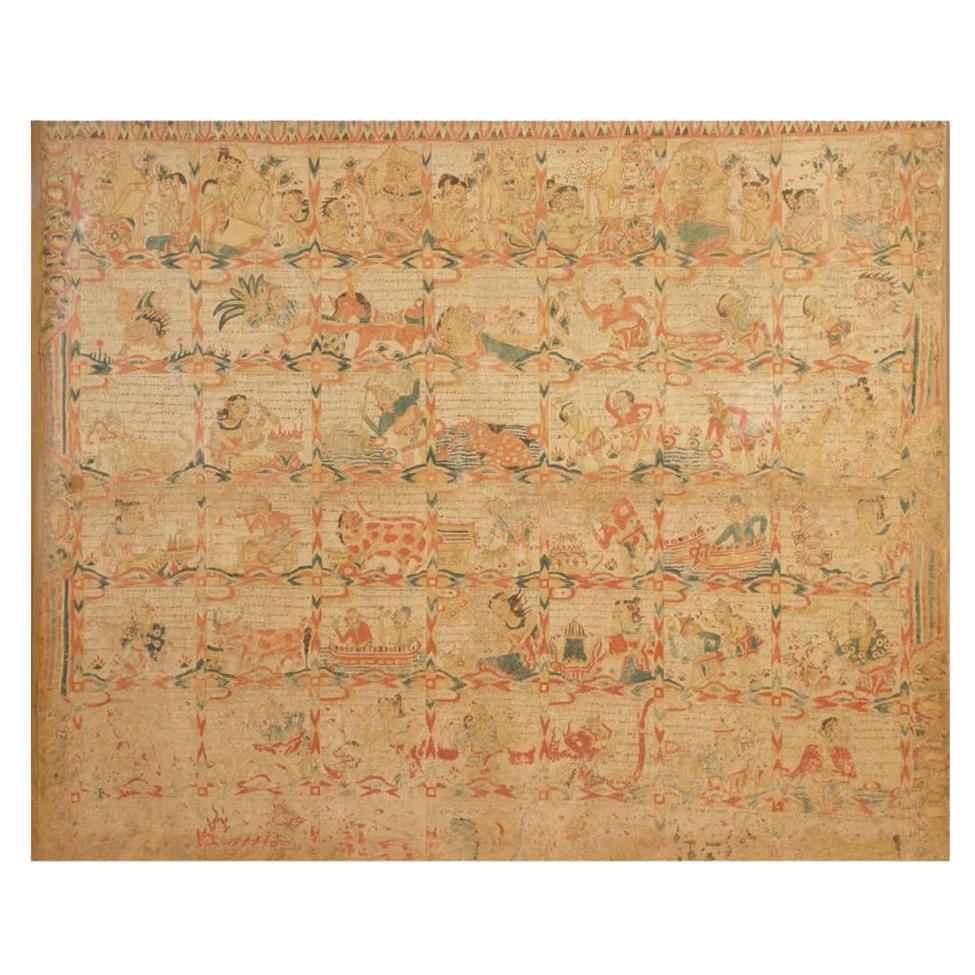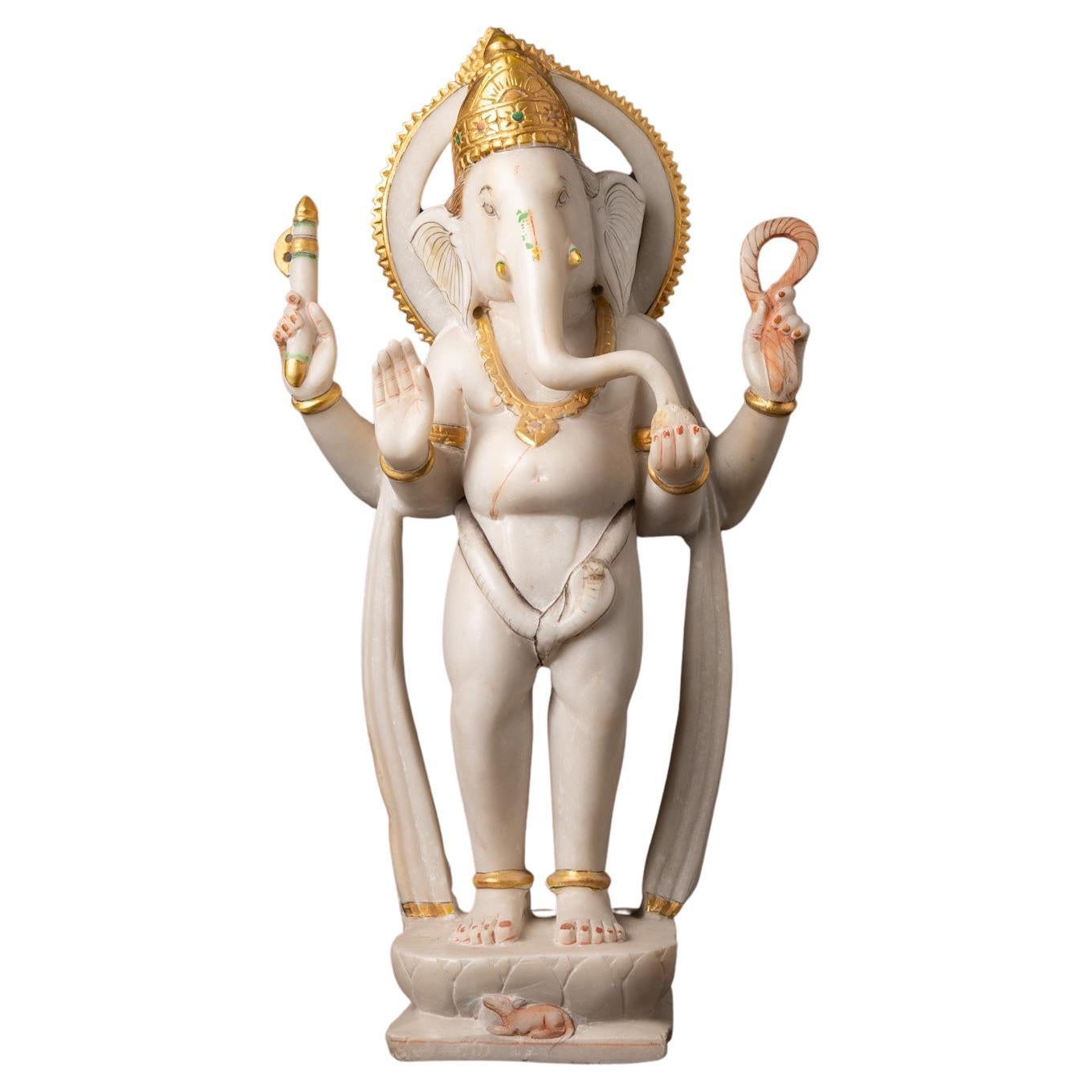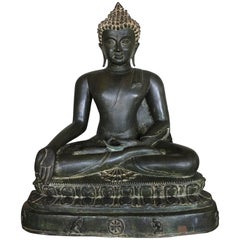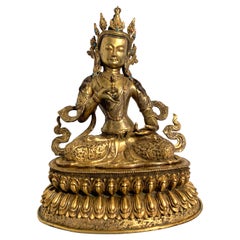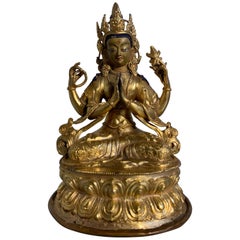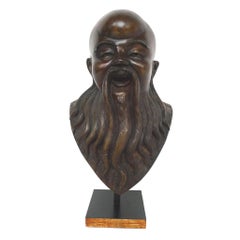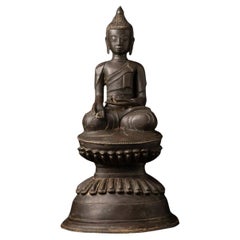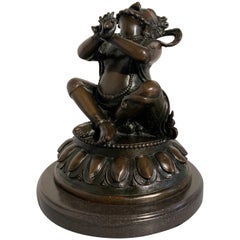
Tibetan Cast Bronze Wrathful Deity, Vajradaka, Tibet, Mid-20th Century
View Similar Items
Want more images or videos?
Request additional images or videos from the seller
1 of 15
Tibetan Cast Bronze Wrathful Deity, Vajradaka, Tibet, Mid-20th Century
About the Item
- Dimensions:Height: 8.5 in (21.59 cm)Diameter: 7.5 in (19.05 cm)
- Style:Tibetan (Of the Period)
- Materials and Techniques:
- Place of Origin:
- Period:
- Date of Manufacture:circa 1960s
- Condition:Wear consistent with age and use. The statue attached to the marble base. The underside of the base with a thin felt cover.
- Seller Location:Austin, TX
- Reference Number:1stDibs: LU894718059081
About the Seller
5.0
Gold Seller
These expertly vetted sellers are highly rated and consistently exceed customer expectations.
Established in 2001
1stDibs seller since 2010
305 sales on 1stDibs
Typical response time: 1 hour
More From This SellerView All
- Large Burmese Bronze Medicine Buddha, Pagan Style, Late 19th CenturyLocated in Austin, TXA large and magnificent cast bronze image of the Medicine Buddha, Bhaisajyaguru, rendered in the Burmese Pagan style, and most likely based on a period example that was either damaged or lost, 19th century, Burma or Thailand. He can be identified as the Medicine Buddha by the hand that rests in his lap, with his middle finger touching the thumb. A medicine pot or fruit stem would originally have been placed in his upturned palm. The face of this Buddha has been sculpted masterfully. He has a beautiful heart shaped face topped by hair neatly arranged in the typical "snail shell curls", and surmounted by a high ushnisha. Long, pendulous earlobes frame his face, a symbol of his princely past. He gazes serenely outwards from heavily lidded, downcast eyes, a content smile upon his full, lush lips. The Buddha is portrayed seated in vajrasana (full lotus position), his elegant hands displayed in varada mudra, the gesture of granting favors and fulfilling wishes. Long, exquisite fingers extended, the thumb and middle finger touching in a gesture of compassion. He is clothed in a simple kasaya wrapped around his body and over one shoulder, leaving the shoulder and part of his chest bare. The diaphanous garment clings to his body, outlining his well proportioned and graceful, almost sensuous, form. The excess material pooled in neat pleats in front of him. A sash thrown over his shoulder. He sits upon a double lotus base upon a raised platform. The platform features two kneeling attendants, usually interpreted as the monks Ananda and Kasyapa. Between them is a circular disc representing the Wheel of Dharma. Contained in the disk is a flower with eight petals, symbolizing the eightfold path, one of the principle teachings of the Buddha. The sides and back of the platform featuring a series of singha, or lions, representative of the Buddha's royal past. An applied lacquer patina covers the entirety of the image. Large deposits of ash (from incense) are present between the curls of the hair, as well as some the other crevices, indicating this image was the subject of worship for many years. Bhaisajyaguru, also called the Medicine Buddha, or Buddha of Healing, is a revered figure in the Buddhist pantheon as a master able to cure suffering, both physical and spiritual, through his teachings. The Pagan Empire ruled most of present day Burma (Myanmar) from 849 to 1297. The capital, Bagan, served as a both the center of government and religion, where Buddhism reigned supreme. Bagan was also at a crossroads of the Buddhist world, with influence from India, Nepal, Tibet, China, and even Indonesia shaping their culture. As such, Pagan Buddha...Category
Antique Late 19th Century Burmese Sculptures and Carvings
MaterialsBronze
- Large Vintage Nepalese Gilt Bronze Vajrasattva Buddha, Mid 20th CenturyLocated in Austin, TXA large and impressive vintage gilt bronze figure of the tantric Buddha Vajrasattva, the Diamond Thunderbolt, mid 20th century, Nepal. Crafted of cast and richly gilt bronze, Vajrasattva sits in vajrasana, or full lotus position, his torso slightly bent at the waist. He holds an upright vajra scepter in one hand, raised at heart level. His other hand, resting on his hip, would originally have held a a ghanta, or bell, which is now missing. He is festooned in jewelry, including a five pointed crown, earrings, necklaces and armlets, all studded with coral and turquoise beads. His long hair falling in elegant tresses around his shoulders, the rest tied up in a high chignon topped by a vajra. Vajrasattva wears a dhoti covering his lower half. The dhoti intricately cast and carved with a scrolling vegetal design, and featuring images from the Ashtamangala, or Eight Auspicious Emblems, including the conch, endless knot, and double fish. Scarves billow out around his arms. The tantric Buddha sits upon a tall double lotus throne, the back with more intricately cast decorations of dragons and lotus blossoms against dense vegetal scrolls. The base sealed with a dented copper plate inscribed with a visvajra, or double vajra...Category
Mid-20th Century Nepalese Tibetan Sculptures and Carvings
MaterialsCoral, Bronze
- Nepalese Gilt Bronze Figure of Bodhisattva Chenrezig, Mid-20th CenturyLocated in Austin, TXA nice vintage early to mid-20th century gilt bronze sculpture of the Buddhist deity Avalokiteshvara in his four armed form, known as Chaturbuhja, or Chenrezig in Tibet. Chenrezig, a form of Avalokiteshvara, the bodhisattva of compassion (known as Guan Yin or Kwan Yin in Chinese), sits in vajrasana upon a high double lotus pedestal. One pair of hands is clasped in prayer at heart level, the other pair of hands raised upwards at shoulder lever and holding discreet attributes, a mala (prayer beads) in one hand, a lotus blossom in the other. Chenrezig is dressed in an elaborately patterned floral dhoti that covers his lower half. His torso bare, shoulders covered with a shawl and scarves that billow out around him. He is festooned with jewels, necklaces, bracelets, armlets, earrings, belt and a five pointed crown. The earrings studded with coral. The crown studded with turquoise. His face is cold painted with beautiful details. The hair has been pigmented blue with crushed lapis, indicating his peaceful nature. The copper base plate is inscribed with a visvajra (double vajra...Category
Late 20th Century Nepalese Tibetan Sculptures and Carvings
MaterialsCoral, Lapis Lazuli, Bronze
- Nepalese Gilt Bronze Bodhisattva 'Amoghapasha?', Early to Mid-20th CenturyLocated in Austin, TXA beautiful and unusual gilt bronze figure of a Bodhisattva, possibly Amoghapasha, Nepal, early to mid-20th century, circa 1930s or 1940s. The regal figure possibly depicting the bodhisattva Amoghapasha, the Unfailing Lasso. The enlightened being is portrayed seated upon a high double lotus pedestal. He is dressed as an Indian prince, wearing a luxurious foliate patterned dhoti around his waist and a billowing scarf around his shoulders. . His torso bare save for the jeweled necklaces and the sacred thread. A five pointed crown with an image of Amitabha Buddha in the central point graces his head. His princely face cold painted with beautiful detail, his hair colored blue with crushed lapis lazuli, indicating his peaceful nature. Amoghapasha holds a lasso in one hand, an axe in the other. He is considered an emanation of Avalokiteshvara. A bodhisattva of compassion, Amoghapasha is so named because of the lasso he holds in his hand. The lasso represents his vast compassion which is thought to extend to encompass all beings, bringing them into a state of perfection and enlightenment. The copper base plate, seemingly a later replacement, has been inscribed with a visvajra (double vajra...Category
Mid-20th Century Nepalese Tibetan Sculptures and Carvings
MaterialsLapis Lazuli, Bronze
- Densatil Gilt Bronze Caryatid Figure, Tibet, 15th CenturyLocated in Austin, TXA heavy and solidly cast, richly gilt, bronze caryatid figure from Densatil Monastery, Central Tibet, early 15th century or earlier. Cast in the form of two four armed figures standing back to back in tribhanga (thrice bent position) on a lotus platform, this piece would originally have served as a pillar for a larger seated deity...Category
Antique 15th Century and Earlier Tibetan Tibetan Sculptures and Carvings
MaterialsBronze
- Sino-Tibetan Gilt Bronze Hayagriva with Consort Vajravarahi, circa 1800, TibetLocated in Austin, TXA fantastic and powerful Sino-Tibetan gilt bronze figure of Hayagriva and his consort Vajravarahi, created in Tibet for the Chinese market, 18th/19th century, Tibet. The wrathful...Category
Antique Early 1800s Tibetan Tibetan Sculptures and Carvings
MaterialsBronze
You May Also Like
- Bronze Bust of Chinese DeityLocated in New York, NYA 20th century bronze bust. Artist unknown. The bust is likely the Chinese deity Shou Xing - one of the Three Star Gods. Shou Xing is the Star God of Longevi...Category
20th Century Sculptures and Carvings
MaterialsBronze
- Early 20th century Old bronze Burmese Buddha statue from BurmaLocated in DEVENTER, NLOld bronze Burmese Buddha statue Material : bronze 54,5 cm high 28 cm wide and 25,5 cm deep Amarapura style Varada mudra Early 20th century Weight: 14,9 kgs Originating from Burma Nr...Category
Early 20th Century Burmese Sculptures and Carvings
MaterialsBronze
- Middle 20th century Old bronze Japanese Amida Buddha statue from JapanLocated in DEVENTER, NLMaterial : bronze 28,4 cm high 17 cm wide and 17 cm deep Fire gilded with 24 krt. gold Abhaya mudra Middle 20th century Bought in Nepal in 2022 Weight: 2,99 kgs Originating from Japa...Category
Mid-20th Century Japanese Sculptures and Carvings
MaterialsBronze
- Japanese Lacquered Gourd Ikebana Vessel, with Storage Box, Mid-20th CenturyLocated in Point Richmond, CALarge Japanese Lacquered Gourd Ikebana vessel with storage box, mid-20th century. Ikebana, the art of flower arrangement, is one of the most sublime ...Category
20th Century Japanese Mid-Century Modern Sculptures and Carvings
MaterialsWood
- 19th Century Painted Wooden Tibetan BowlLocated in Atlanta, GAA beautiful late 19th century paint bowl with a lid that was once used for storing the famous Tibetan barley flour (Tsampa). These bowls were used by the Buddhist mountain people of ...Category
Antique Late 19th Century Tibetan Sculptures and Carvings
MaterialsWood, Lacquer, Paint
- 19th Century, Gilded Lacquer Tsampa Bowl from TibetLocated in Atlanta, GAA beautiful late 19th century lacquer covered bowl that was once used for storing the famous Tibetan barley flour (Tsampa). This beautifully handcrafted wooden bowl has a gorgeous, l...Category
Antique Late 19th Century Tibetan Sculptures and Carvings
MaterialsWood, Lacquer, Paint
